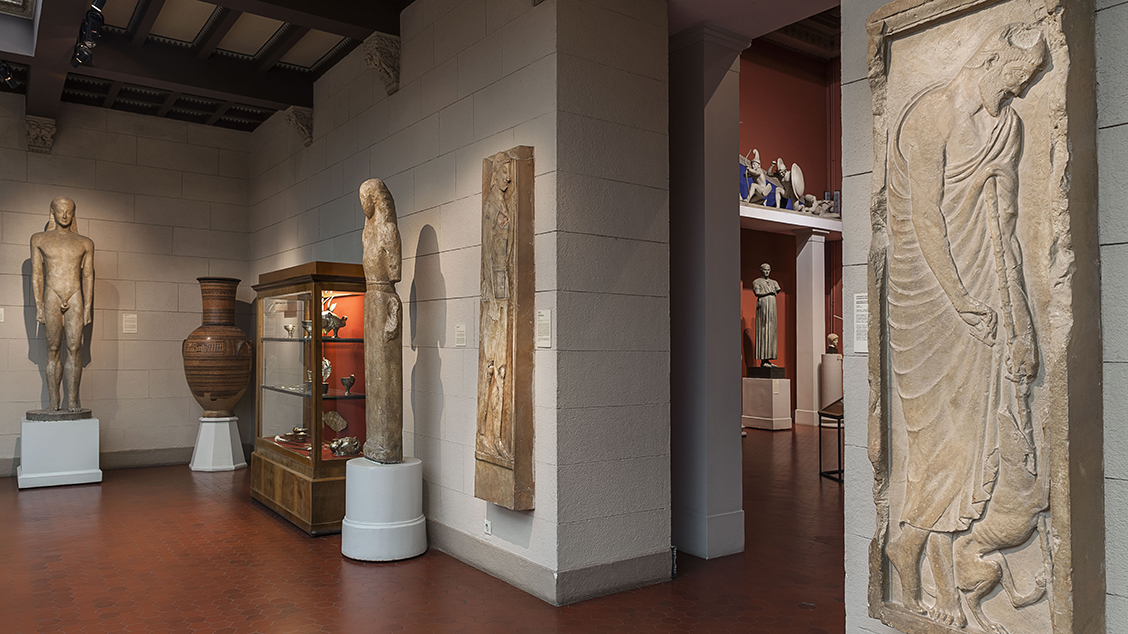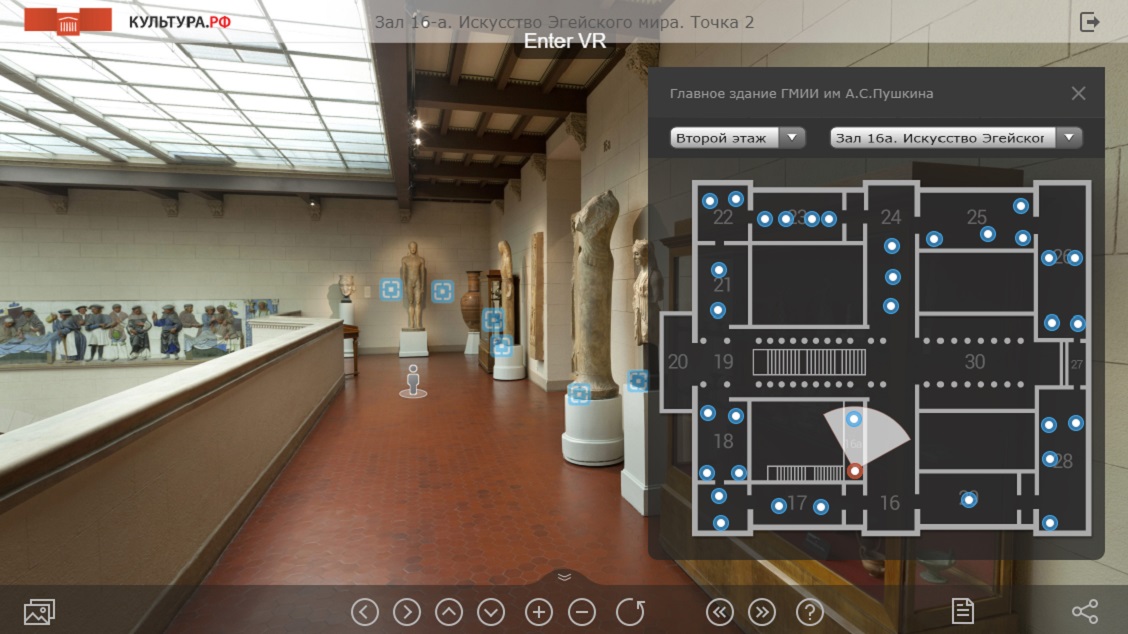Showcase No. 1 contains copies of vessels from Ancient Troy in the north-western part of Asia Minor, which relate to the III millennium BC. These hand-moulded vessels, decorated with schematic depictions of human faces, were evidently used for cultic purposes.
The greatest cultural flowering of Bronze Age culture was achieved in the II millennium BC on the island of Crete. Showcase No. 1 contains copies of items made from coloured faiënce – ritual figurines of goddesses or priestesses and depictions of animals striking for their faithful portrayal of Nature.
The Mycenae culture existed within the territory of Greece in the middle or late II millennium BC: its centres were cities in the Peloponnese including Mycenae and Tiryns.
The electrotype copies of items worked from precious metals from the royal tombs of "gold-rich Mycenae" – funerary masks (including the so-called "Agamemnon Mask"), cups, swords and plaques (Showcases Nos. 2 and 3) provide a fairly accurate idea of the art from the mainland during the same period. Particularly interesting are the vivid scenes showing the capture and taming of wild bulls depicted in relief on two cups from Vaphio.
The 9th and 8th centuries BC – the era referred to as Homeric – were the heyday of pottery production. The world outlook peculiar to that time, steeped in religion and mystic, is reflected in the predominance of geometric decoration, to elements of which magic power was attributed. Depictions of human beings and animals were also subjected to 'geometrization'. Monumental vases (mid-8th century BC) found in Athens' Dypilon Cemetery were part of the decoration for graves of Athenian aristocrats.
The period of the 7th and 6th centuries BC in the history of Greek art was to become known as Archaic. At the end of the 7th century BC the first of the works of monumental sculpture which have survived to this day were the statue of the goddess Artemis from the island of Delos (mid-7th century BC), a statue from the island of Samos dedicated to the goddess Hera (575-550 BC) and Nike by the sculptor Archermos (c. 550 BC) depicted a winged goddess fleet of foot. Statues of youths (kouroi), like Apollo of Tenea (mid-6th century BC), used to be erected in honour of athletes who had won Panhellenic contests or hero-warriors. They could also serve as funerary monuments and as offerings to the gods.
In the last third of the 6th century BC the statues of girls (korai) were made which were found in the Athens acropolis. The statues were dedicated to Athena and they stood in front of the ancient temple, which was destroyed in 480 BC. The display includes a reproduction of one of the most striking statues, to which the name "Pensive Kora" has been given.




